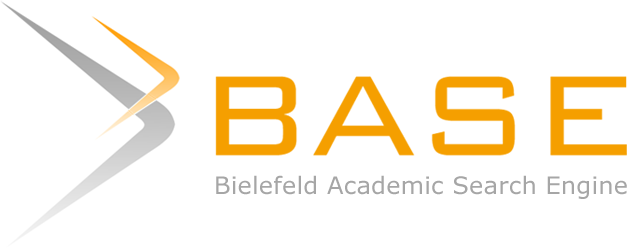Abstract
La Comunidad de Estados Latinoamericanos y Caribeños (CELAC) was initiated in 2011 as a forum for dialogue and consensus between Latin American and Caribbean governments where it forms a trading block that excludes the United States and Canada. The US objected to the establishment of CELAC which seemed to challenges the former regional organization (OAS). This paper aims to analyze the considerations of the Mexican government to join CELAC in the midst of mutual agreement with US and NAFTA. Theory of formulation of foreign policy is used to answer the sources of political consideration of the Mexican government. It is a qualitative descriptive research that used primary data comes from Mexican government reports, content of CELAC official website, and journals. Data is obtained from library research. The analysis technique is carried out through generalization of the evidence and organization of the data so that it presents a coherent and consistent picture in proving the basic assumptions of the theory. It examines determinant of Mexico foreign policy formulation include 1) expansion of FTA in order to raise national economy, 2) maintaining the legitimacy of the government through multilateral cooperation, 3) identity politics as a Latin American, 4) increasing state performance in dealing with eradication of drugs and immigrant problems, 5) state economic revival post 2008 global crisis, 6) CELAC as a bridge to expand bi-regional trade with the European Union, and 7) forum to balance US dominant interest in the region.
References
Bakewell, P. (1998). Colonial Latin America. Latin America: Its Problems and Its Promise, 59–68. https://doi.org/10.1093/oxfordhb/9780199232116.013.0016
Baylis, J., & Smith, S. (2001). The Globalization of World Politics (third). New York: Oxford University Press.
BBC. (2005, December 17). Amerika perketat UU imigrasi. BBC. Retrieved from http://www.bbc.co.uk/indonesian/news/story/2005/12/051217_immigrantlawsw.shtml
Bethel, L. (1995). The Cambridge History of Latin America, III. https://doi.org/10.1017/CHOL9780521395250
Blanco, L. (2009). Latin America and the Financial Crisis of 2008: Lessons and Challenges. Retrieved from https://publicpolicy.pepperdine.edu/academics/research/policy-review/2010v3/content/latin-america-and-the-financial-crisis-of-2008.pdf
Bland, G. (2011). Considering Local Democratic Transition in Latin America. Journal of Politics in Latin America Latin America, 3(1), 65–98.
Bureau of Public Affairs. (2016). 2016 International Narcotics Control Strategy Report (INCSR): Mexico. Retrieved from https://www.state.gov/j/inl/rls/nrcrpt/2016/vol1/253288.htm
Campos-Vázquez, R. M. (2013). Economía mexicana NUEVA ÉPOCA. Economía Mexicana. Nueva Época. Centro de Investigación y Docencia Económicas, A.C. Retrieved from http://www.redalyc.org/html/323/32329969001/
CELAC. (2011). Celac international – Seguimos haciendo historia. Retrieved September 17, 2018, from http://celacinternational.org/
CELAC. (2018). What is CELAC? | SELA. Retrieved August 15, 2018, from http://www.sela.org/celac/quienes-somos/que-es-la-celac
Escobar Gamboa, O. R. (2013). Foreign direct investment (FDI) determinants and spatial spillovers across Mexico’s states. The Journal of International Trade & Economic Development, 22(7), 993–1012.
https://doi.org/10.1080/09638199.2011.624190
Esquivel, G., & Rodrı́guez-López, J. A. (2003). Technology, trade, and wage inequality in Mexico before and after NAFTA. Journal of Development Economics, 72(2), 543–565. https://doi.org/10.1016/S0304-3878(03)00119-6
Flores, M., Medellín, S., & Villarreal, A. (2018). Global Markets and the Role of Geographical Proximity in Mexico’s Employment Growth. Growth and Change, 49(3), 548–568. https://doi.org/10.1111/grow.12248
Fuentes, F. (2011). The Community of Latin America and Caribbean State (CELAC). Challenge to US Hegemony in Western Hemisphere? Retrieved March 17, 2017, from http://www.globalresearch.ca/the-community-of-latin-american-and-caribbean-states-celac-challenge-to-us-hegemony-in-western-hemisphere/28035
Ginong Maulidyatama, M. (2016). IDENTITAS KOLEKTIF AMERIKA SERIKAT DAN MEKSIKO DALAM MERIDA INITIATIVE 2008 UNTUK MENANGGULANGI PEREDARAN GELAP NARKOTIKA (PERIODE 2008-2014). Journal of International Relations (Vol. 2). Retrieved from http://ejournal-s1.undip.ac.id/index.php/jihiWebsite:http://www.fisip.undip.ac.id
Guillén, A. (2011). The effects of the global economic crisis in Latin America. Revista de Economia Política, 31(2), 2011. Retrieved from http://www.scielo.br/pdf/rep/v31n2/01.pdf
Gurria, A. (2017). LATIN AMERICA AND THE CARIBBEAN ACTIVE WITH SUPPORTING STRUCTURAL REFORM EFFORTS IN LATIN AMERICA AND THE CARIBBEAN. Paris. Retrieved from http://www.oecd.org/global-relations/Active-with-Latin-America-and-the-Caribbean.pdf
Hanson, G. H. (2003). What Has Happened To Wages In Mexico Since NAFTA? Implications For Hemispheric Free Trade. Retrieved from http://www.nber.org/papers/w9563
Hernandez, M. T., Lemp, G. F., Castañeda, X., Sanchez, M. A., Aoki, B. K., Tapia-Conyer, R., & Drake, M. V. (2004). HIV/AIDS among Mexican migrants and recent immigrants in California and Mexico. Journal of Acquired Immune Deficiency Syndromes, 37(SUPPL. 4), S203. https://doi.org/10.1097/01.qai.0000141249.31346.26
Hoffmann, A. R., & Tabak, J. (2017). Discussing Global Health and Access to Medicines in the un System: The Case of the Union of South American Nations (unasur). The Hague Journal of Diplomacy, 12(2–3), 178–196. https://doi.org/10.1163/1871191X-12341358
Holsti, K. J. (1983). Politik Internasional Kerangka Untuk Analisis (International Politics). Jakarta: Erlangga.
Holsti, O. R., & Holsti, K. J. (1985). Theories of International Relations. The Dividing Discipline: Hegemony and Diversity in International Theory, 1–62.
Ibarra-Yunez, A. (2003). Spaghetti regionalism or strategic foreign trade: some evidence for Mexico. Journal of Development Economics, 72(2), 567–584. https://doi.org/10.1016/S0304-3878(03)00120-2
Kegley Jr., C. W., & Wittkopf, E. R. (1999). World Politics: Trend and Transformation (Seventh). United States of America: Macmillan Press, Ltd.
Kennedy, D., & Beaton, B. (2016). Two steps forward? Assessing Latin American regionalism through CELAC. Latin American Policy, 7(1), 52–79. https://doi.org/10.1111/lamp.12090
Kusumaningrum, D. N. (2018). The United States and Latin America Regional Cooperation: Organization of American States (OAS). JURNAL SOSIAL POLITIK, 4(1), 149–167. https://doi.org/10.22219/SOSPOL.V4I1.5566.G5329
Legg, K. R., & Morrison, J. F. (1991). The Formulation of foreign policy objectives. In R. Little & M. Smith (Eds.), Perspective on World Politics Second Edition. London: Croom Helm In Association With The Open University Press.
Lopes Jr., G. P. (2015). The Sino-Brazilian Principles in a Latin American and BRICS Context: The Case for Comparative Public Budgeting Legal Research. Wisconsin International Law Journal, 1, 1–45.
Magis-Rodríguez, C., Gayet, C., Negroni, M., Leyva, R., Bravo-García, E., Uribe, P., & Bronfman, M. (2004). Migration and AIDS in Mexico: An overview based on recent evidence. Journal of Acquired Immune Deficiency Syndromes, 37(SUPPL. 4), S215–S226. https://doi.org/10.1097/01.qai.0000141252.16099.af
Martin, J. (2017). Illegal Immigration and Its Effects on Society and the Economy. Federation for American Immigration Reform. FAIR. Retrieved from https://www.fairus.org/legislation/illegal-immigration-and-its-effects-society-and-economy
Meade, T. A. (2010). A History of Modern Latin America: 1800 to the Present, 389. https://doi.org/10.1017/CBO9781107415324.004
Moreno-Brid, J. C., Santamaría, J., & Rivas Valdivia, J. C. (2005). Industrialization and Economic Growth in Mexico after NAFTA: The Road Travelled. Development and Change, 36(6), 1095–1119. https://doi.org/10.1111/j.0012-155X.2005.00451.x
Morris, E. K. (2013). Think Again: Mexican Drug Cartels. Foreign Policy, (203), 8,30-33. Retrieved from https://zeus.tarleton.edu/login?url=http://search.proquest.com/docview/1468593946?accountid=7078%5Cnhttp://resolver.ebscohost.com/openurl?ctx_ver=Z39.88-2004&ctx_enc=info:ofi/enc:UTF-8&rfr_id=info:sid/ProQ:military&rft_val_fmt=info:ofi/fmt:kev:mtx:journal
NTI. (2017). Community of Latin American and Caribbean States (CELAC) | Treaties &Co Regimes | NTI. Retrieved September 17, 2018, from https://www.nti.org/learn/treaties-and-regimes/community-latin-american-and-caribbean-states-celac/
O’Boyle, B. (2015). Explainer : What is CELAC? Retrieved March 16, 2017, from http://www.as-coa.org/articles/explainer-what-celac
O’Neil, S. (2009). The real war in Mexico: How democracy can defeat the drug cartels. Foreign Affairs. https://doi.org/Article
OAS. (2015). Inter-American Observatory on Dr
ugs (OID). Retrieved August 23, 2017, from http://www.cicad.oas.org/Main/Template.asp?File=/oid/default_eng.asp
OAS. (2017a). About CICAD. Retrieved November 19, 2017, from http://www.cicad.oas.org/Main/Template.asp?File=/Main/AboutCICAD/about_ENG.asp
OAS. (2017b). About CICAD. Retrieved August 23, 2017, from http://www.cicad.oas.org/Main/Template.asp?File=/Main/AboutCICAD/about_eng.asp
OAS. (2017c). Drugs. Retrieved November 19, 2017, from http://www.oas.org/en/topics/drugs.asp
Ochoa, E. C. (1996). The Economic History of Latin America since Independence. History: Reviews of New Books, 24(4), 160–160. https://doi.org/10.1080/03612759.1996.9952494
Perry, D. M., & Berry, K. A. (2016). Central American integration through infrastructure development: A case study of Costa Rican hydropower. Regions & Cohesion, 6(1), 96–115. https://doi.org/http://dx.doi.org/10.3167/reco.2015.060105
Pew. (2013, January 29). A Nation of Immigrants. Pew Research Center. Retrieved from http://www.pewhispanic.org/2013/01/29/a-nation-of-immigrants/
Portales, C. (2012). NOR EF R ep ort CELAC : a voice for Latin America and the Caribbean ? Retrieved from https://www.files.ethz.ch/isn/137613/CELAC.pdf
Ramirez, M. D. (2003). Mexico under NAFTA: a critical assessment. The Quarterly Review of Economics and Finance, 43(5), 863–892. https://doi.org/10.1016/S1062-9769(03)00052-8
Ramirez, M. D. (2006). Is foreign direct investment beneficial for Mexico? An empirical analysis, 1960–2001. World Development, 34(5), 802–817. https://doi.org/10.1016/j.worlddev.2006.01.001
Rani, F., & Samosir, E. (2015). Dampak Kerjasama Merida Initiative Terhadap Penanggulangan Peredaran Narkoba di Meksiko Tahun 2007-2012. Transnasional, 6(2), 1725–1743. Retrieved from https://ejournal.unri.ac.id/index.php/JTS/article/view/2712/2660
Rogatyuk, D. (2016, February 5). Latin America’s CELAC summit debates push back against US power, economic measures | Green Left Weekly. Green Left Weekly. Retrieved from https://www.greenleft.org.au/content/latin-americas-celac-summit-debates-push-back-against-us-power-economic-measures
Rojas-Suarez, L. (2010). The International Financial Crisis: Eight Lessons for and from Latin America. Retrieved from http://www.cgdev.org/content/publications/detail/1423709www.cgdev.org
Rojas, R. B. (2015, February 6). CELAC summit highlights US isolation | Green Left Weekly. Green Left Weekly. Retrieved from https://www.greenleft.org.au/content/celac-summit-highlights-us-isolation
Ruano, L. (2017). Towards San Salvador: where Europe meets Latin America. https://doi.org/10.2815/567431
Sanahuja, A. (2015). The EU and CELAC: Reinvigorating a Strategic Partnership. EU-LAC Foundation. https://doi.org/http://dx.doi.org/10.12858/0115en1
Sanchez, M. A., Lemp, G. F., Magis-Rodríguez, C., Bravo-Garcia, E., Carter, S., & Ruiz, J. D. (2004). The epidemiology of HIV among Mexican migrants and recent immigrants in California and Mexico. Journal of Acquired Immune Deficiency Syndromes, 37(SUPPL. 4), S204–S214. https://doi.org/10.1097/01.qai.0000141253.54217.24
Saraswita, P. I., Dharmiasih, W. D. ., & Resen, P. T. K. (2014). PERAN AMERIKA SERIKAT DALAM KERJASAMA PENANGGULANGAN PERDAGANGAN NARKOTIKA DI MEKSIKO 2007-2012. Jurnal Hubungan Internasional, 1(2). Retrieved from https://ojs.unud.ac.id/index.php/hi/article/view/10102
Satria, R. (2014). BISNIS DAN KONFLIK DI MEKSIKO. SPEKTRUM, 11(1). Retrieved from https://www.publikasiilmiah.unwahas.ac.id/index.php/SPEKTRUM/article/view/1071/1180
Seelke, C. R. (2011). MÉRIDA INITIATIVE FOR MEXICO AND CENTRAL AMERICA: FUNDING AND POLICY ISSUES. Current Politics and Economics of the United States, 13(4), 707–746.
Segovia, D. (2013). Latin America and the caribbean: Between the OAS and CELAC. European Review of Latin American and Caribbean Studies.
Silalahi, U. (2009). Metode Penelitian Sosial. Bandung: Refika Aditama.
Speck, M. (2013). The OAS Position on Drugs: A (Gradual) New Approach. Crisis Group. Retrieved from http://blog.crisisgroup.org/latin-america/mexico/2013/06/21/the-oas-position-on-drugs-a-gradual-new-approach/
Spreen, T. H. (2000). The Citrus Industries of The United States and Mexico After NAFTA. Revista Chapingo Serie Evista Horticultura, VI(2), 145–152. Retrieved from http://www.redalyc.org/pdf/609/60960201.pdf
Sullivan, M. P., Beittel, J. S., Meyer, P. J., Seelke, C. R., & Taft-Morales, M. (2012). Latin America and the Caribbean: U.S. Policy and Key Issues for Congress in 2012. Retrieved from https://fas.org/sgp/crs/row/R42360.pdf
TeleSUR. (2015). Tracking US Intervention in Venezuela Since 2002. Retrieved September 19, 2018, from https://www.telesurtv.net/english/analysis/Tracking-US-Intervention-in-Venezuela-Since-2002-20151117-0045.html
Thi, H., & Nguyen, T. (2014). Theories of US Foreign Policy: An Overview. World Journal of Social Science, 1(1). https://doi.org/10.5430/wjss.v1n1p20
Thomas, C. S. (2005). Understanding Latin America Politics: Six Factors to Consider, 1–12.
UNODC. (2007). Crime, Violence, and Development: Trends, Costs, and Policy Options in the Caribbean. Retrieved from https://www.unodc.org/pdf/research/Cr_and_Vio_Car_E.pdf
UNODC. (2012a). Cocaine from South America to the United States. Retrieved from https://www.unodc.org/documents/data-and-analysis/Studies/TOC_Central_America_and_the_Caribbean_english.pdf
UNODC. (2012b). Transnational Organized Crime in Central America and the Caribbean: A Threat Assessment, (September), 80. Retrieved from http://www.unodc.org/documents/data-and-analysis/Studies/TOC_Central_America_and_the_Caribbean_english.pdf
Villanueva, L. (2017). Are manufacturing workers benefiting from trade? The case of Mexico’s manufacturing sector. International Journal of Development Issues, 16(1), 25–42. https://doi.org/10.1108/IJDI-08-2016-0048
Villarreal, M. A. (2017). Mexico’s Free Trade Agreements. Retrieved from www.crs.gov
Waldkirch, A. (2010). The Effects of Foreign Direct Investment in Mexico since NAFTA. World Economy, 33(5), 710–745. https://doi.org/10.1111/j.1467-9701.2009.01244.x
Wiarda, H. J., & Kline, H. F. (2007). Latin American Politics and Development (Sixth). Colorado: Westview Press, Inc.
Yang, D. (2011). Migrant Remittances. Journal of Economic Perspectives, 25(3), 129–152. https://doi.org/10.1257/jep.25.3.129
Recommended Citation
Kusumaningrum, Demeiati Nur
(2019)
"CELAC: Mexican Foreign Policy Interest on Latin American and Caribbean Regionalism,"
Global: Jurnal Politik Internasional: Vol. 21:
No.
1, Pp. 126-154.
DOI: 10.7454/global.v21i1.349
Available at:
https://scholarhub.ui.ac.id/global/vol21/iss1/6
Included in
Defense and Security Studies Commons, International and Area Studies Commons, International Relations Commons, Law Commons, Political Theory Commons

















